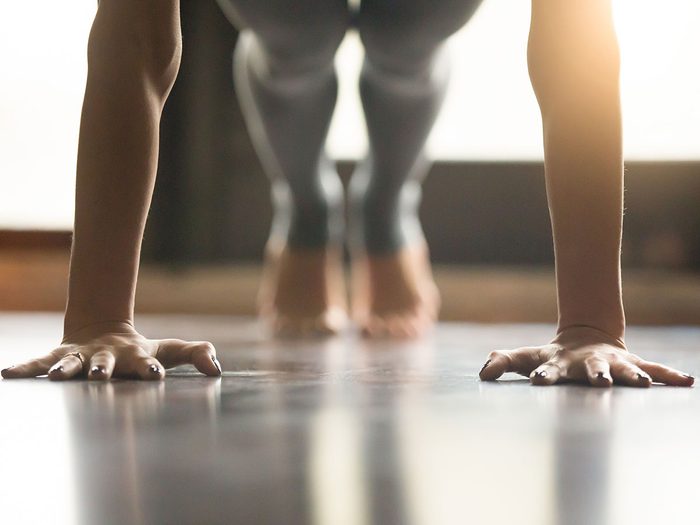
For Optimum Results
When working out, it’s a must to include cardiovascular, strength and flexibility training each week. But what are the key exercises? A survey of 17,000 personal trainers by the American Council on Exercise determined seven essentials for your fitness program. Best Health assembled a panel of prominent fitness professionals and asked them why you need to do these tried-and-true exercises. As always, check with your doctor before starting any fitness program.
(Psst: Here’s why you should listen to music when you work out.)
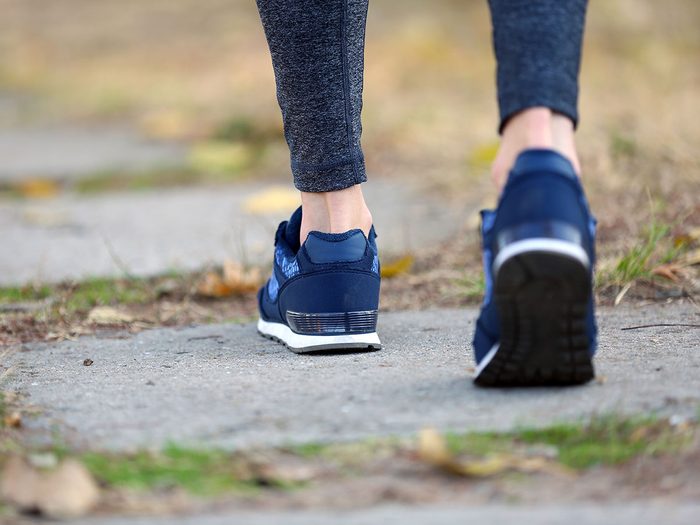
Cardiovascular: Walking
Why It’s Essential:
Walking has been shown in studies to be associated with many health benefits, such as lower rates of heart disease, stroke and type 2 diabetes. As well, studies found walking just 30 minutes a day, a few days a week, boosted bone density in women. (See how you can burn more calories walking.)
Technique and Tips:
Walking should be brisk (typically 5-6 km/h for most people — not strolling), and challenging enough that you feel a little out of breath but can still carry on a conversation. “I encourage walkers to clench their glutes as they walk, and to engage muscles in their upper back to get a better workout and a faster speed. This will also improve posture,” says Lee Scott, a walking coach and personal trainer based in Toronto, and the founder of WoW Power Walking.
Switch It Up:
“One great way to train is to do speed intervals,” Scott says. “Start with 30 seconds of speeding up, then 45 seconds of recovery. Repeat that 10 times.” The next week, shorten your recovery time. Then the week after that, try hill repeats. “And change up your walking terrain to prevent injury,” she says.
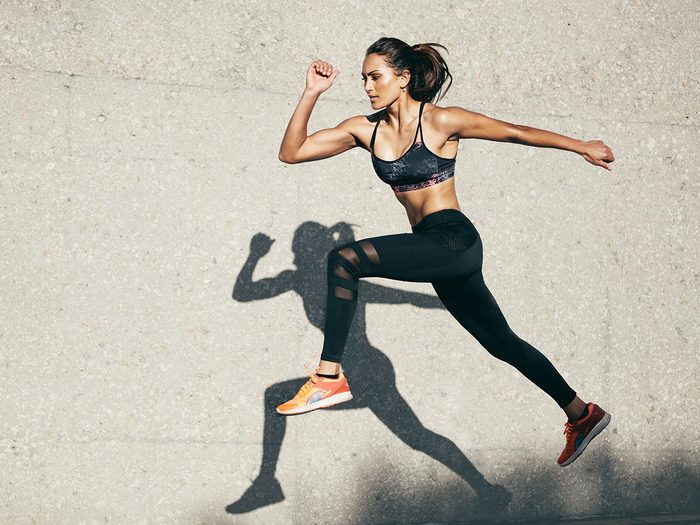
Cardiovascular: Running
Why It’s Essential:
“Running is the gold standard for total calories burned per minute over all other activities,” says Jay Blahnik, an award-winning personal trainer and author of Full-Body Flexibility based in California. (Editor’s note: He is was a contract athlete and consultant with Nike for over 20 years and worked on the Nike+ Running app. Currently, he’s the Senior Director of Fitness for Health technologies for Apple.) “The calories you burn vary depending on your body weight and the intensity of your run, but a good rule of thumb is 100 calories per mile (that’s 60 calories per kilometre). Says Blahnik, “You don’t have to run very far, or very fast, to burn a good amount of calories.”
Technique and Tips:
Many people avoid running for fear of the impact on knees and joints. “Running gets a bad rap,” says Blahnik. “Yes, there is impact with running; however, in terms of our body’s biomechanics, it is a natural movement that we were designed to do.” To prevent knee injury, make sure you are running in proper shoes that have been fitted by an expert. Mix up the impact by sometimes choosing treadmills over out-doors, and if you’re outdoors, head for trails rather than hard surfaces, which have a greater impact on the joints. “You can focus on having a ‘quieter’ running stride-meaning, if you think about landing softly, you will land more softly,” says Blahnik. Finally, some people have injuries or biomechanical issues that make running more difficult; a sports physician will be able to detect if your legs are properly aligned for the activity. (Check out what every woman needs to know about running.)
Switch It Up:
Change the landscape, says Blahnik. ”Lots of outdoor runners don’t like treadmills because they find them boring – but I suggest using them once a week for speed or hill work, adding power and speed to your program.” Conversely, if you are always in the gym, grab your shoes and head outside for a change of scenery. To improve speed, play with a variety of stride lengths.” You’ll eventually find the perfect combination of stride length and leg turnover to obtain the fastest, most comfortable speed for your body,” says Blahnik. And don’t rule out intervals (alternating slow and fast speeds). “Interval training does three things: It allows you to go much faster for shorter distances than you could if you ran the same pace the whole time; it helps the overall calorie burn of a workout—fast bursts followed by slow bursts often add up to more calories burned overall; and it reduces the boredom many people feel when they may not like running or are new to it.” (Psst: These running essentials will help get you to the finish line.)
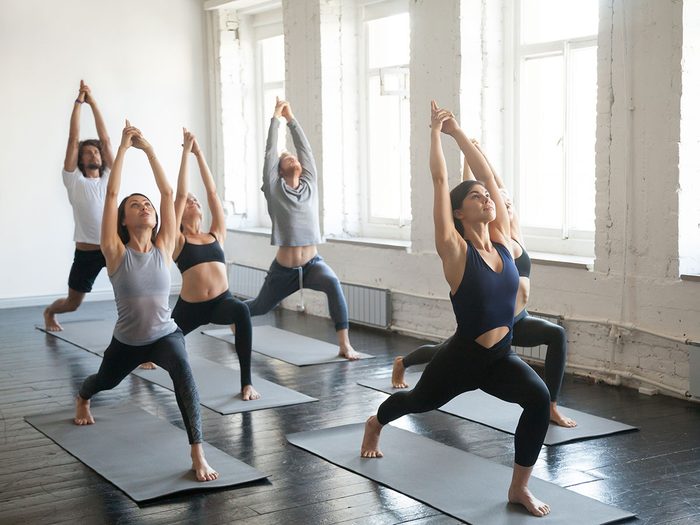
Flexibility: Yoga
Why It’s Essential:
Studies show that yoga significantly improves flexibility, balance, and muscular strength and endurance, giving you the ability to exercise longer. Yoga may also help control physiological variables such as blood pressure, respiration and heart rate, and speed up your metabolic rate to help you maintain a healthy weight. There are a number of different styles and types of yoga you can practise, says Helen Vanderburg, a personal trainer and co-owner of Heaven’s Fitness in Calgary. “If stress reduction is your goal, a restorative yoga class is good. If you want a tough workout, I recommend either Ashtanga or a fusion fitness class.”
Technique and Tips:
“Each yoga posture involves a different focus for the body,” says Vanderburg. The standing postures build strength of the legs and core as well as flexibility of the lower body — especially the hamstrings, hip flexors and adductors (inner thighs). Forward bends, backbends and twists work on strength and flexibility of the spine and pelvis as well as the surrounding muscles. Inversions — where the head is below the heart and feet in relation to gravity — have a wide range of benefits for the nervous system. A downward-facing dog yoga pose is a partial inversion, while a headstand is an example of a full inversion. (Psst: Yoga can also help boost your energy.)
Switch It Up:
Vanderburg recommends that you don’t stick to just one routine, and says that once you learn the yoga postures, it is easy to do them on your own. “All yoga postures can be done at home. Listen to your body and never go beyond what feels comfortable for you.” Ready to get started? Check out the best yoga mats on Amazon.
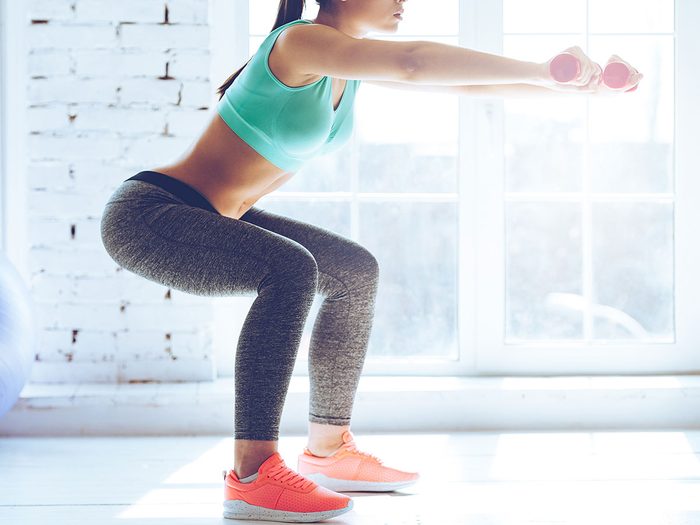
Strength-Building: The Squat
Why It’s Essential:
The squat is rated, time and again, as one of the most effective exercises for toning the legs, including the quadriceps in the front of the thighs, the hamstrings in the back, and the gluteus maximus in the buttocks. (Psst: This is how many squats it takes to see results.)
Technique and Tips:
“The squat gives different results depending on your body type,” says Frédéric Delavier, based in France, is a personal trainer and author of Strength Training Anatomy. “If you have long limbs, the squat will mainly act on the glutes and lower back; if you have shorter limbs, it will work the quadriceps muscles more.” Here’s the basic squat technique: Stand with feet hip-width apart with a chair behind you. Slowly lower your hips as if you are about to sit, but just before your body touches the chair, return slowly to a standing position. Keep your back straight, and try not to let your knees go past your toes. “If you have knee or joint problems, vary the depth of the squat to only a few degrees, and progress gradually,” says Sherri McMillan, is a personal trainer and the owner of North-West Personal Training in Washington state.
Switch It Up:
A study found the single-leg squat was a highly effective butt toner. Stand on a step, facing toward the step, with your weight on your left leg and your right foot hanging off the back of the step. Bend the weight-bearing knee and lower your body, pushing your hips back into a semi-seated position. Your knee should not come over the toes, weight should be on the left heel, and shoulders should be square with your hips. To come up, push down through your heel while contracting the glutes. Then switch sides.
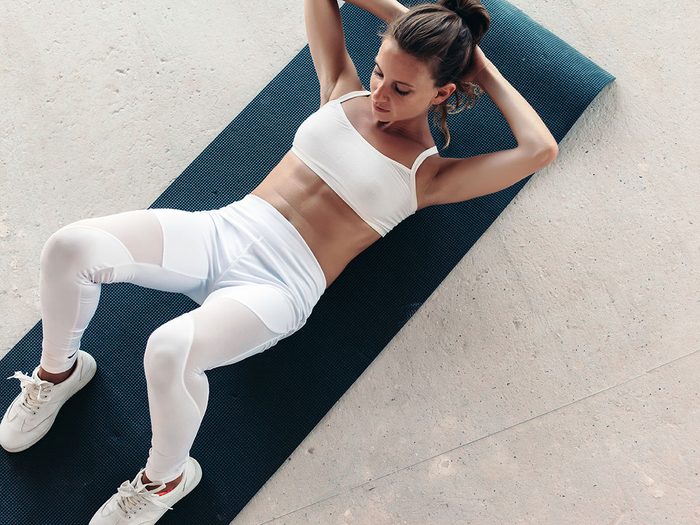
Strength-Building: The Crunch (or Any Ab Exercise)
Why It’s Essential:
Your abdominal muscles increase your overall strength and power, help stabilize your torso and can help alleviate back pain. Abdominal exercises can help strengthen weak parts of the body and take pressure away from the back. Strong abdominals also help you maintain good posture. (See the other benefits of working your core—aside from getting abs.)
Technique and Tips:
The effectiveness of any abdominal exercise will vary from person to person, and will depend on factors such as level of athleticism and past injuries. “It is hard picking one abdominal exercise, because you have to train all three planes of your abdominals — your rectus abdominis [the front abs or “six-pack” abs], your obliques [the sides] and your transversus abdominis [the inner abdominals],” says Harley Pasternak, a California-based celebrity personal trainer and nutritionist (who’s worked with everyone from Natalie Portman to Megan Fox and Eva Mendes) and best-selling author of 5-Factor Fitness and The 5-Factor Diet. Your abdominals, like any other muscle group, will need recovery time between workouts. Pasternak’s two-in-one exercise is a crunch with a twist. Lie flat on your back and lift your shoulders off the ground, curling your abdominals. At the top, rotate your left shoulder to the right side, then rotate back to centre and release back to the floor. Switch sides, and repeat. “You’re working your rectus abdominis and your transversus, while flexing and rotating your core,” says Pasternak.
Switch It Up:
Vary abdominal exercises with each workout. “During one workout you could do a plank and the next day try straight-leg lifts,” suggests McMillan. For the plank, lie flat on your stomach on the floor, raising up onto your toes and resting on your forearms. Keep your back flat, in a straight line from head to heels, tilt your pelvis and contract your abdominals to prevent your glutes from sticking up in the air. Hold for 30 to 60 seconds. For a straight-leg lift, lie flat on your back and lift one leg up into the air, then slowly lower it. Repeat the leg-lift with your other leg, then slowly lower it. Also try double-leg lifts. (Here are two other abs strength workouts to try, if you hate crunches and planks.)
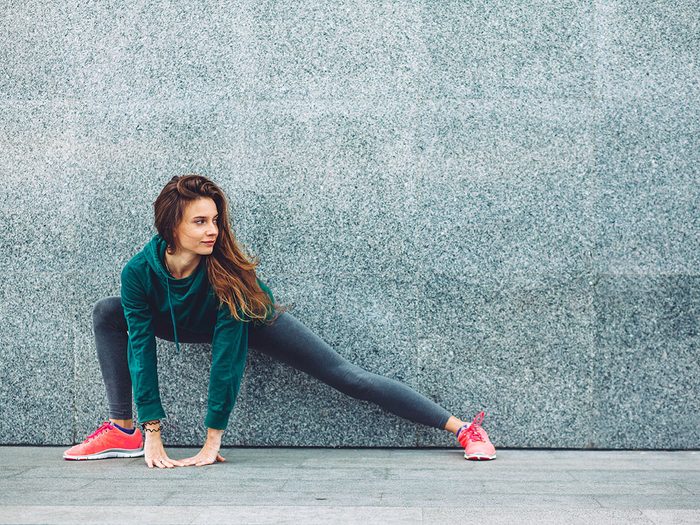
Strength-Building: The Lunge
Why It’s Essential:
Research shows that lunges rival squats as the ultimate lower-body exercise to tone glutes, quadriceps and hamstrings. (Learn how to do the “Spiderman” lunge.)
Technique and Tips:
To do a basic lunge, take one step forward and drop your rear knee almost to the floor, making sure to keep the front heel on the floor and that knee directly over the centre of that foot. Slowly return to a standing position. Repeat with the other leg. “I like the lunge because it is a multi-joint exercise,” says Pasternak. “The fact that the lunge involves your glutes, quads and hamstrings means there is a lot of synergy in your lower body. This is a great leg strengthener.”
Switch It Up:
Pasternak recommends incorporating a variety of lunges into your program, and changing them weekly. He has a favourite: walking lunges. (You can also do lunges with a resistance band.)
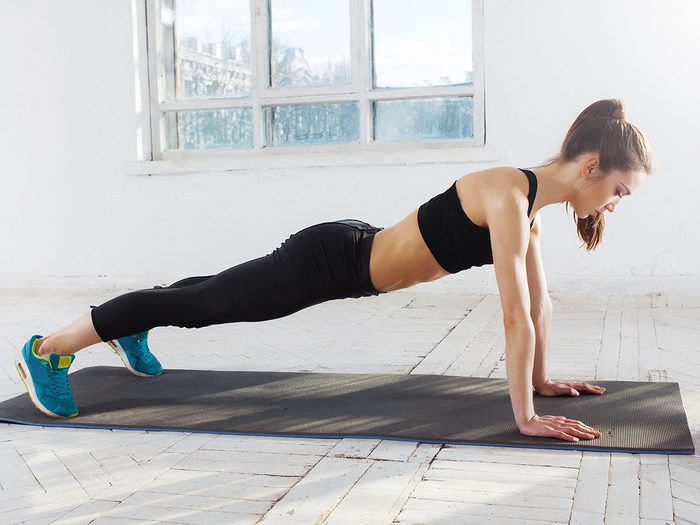
Strength-Building: The Push-Up
Why It’s Essential:
The push-up requires no equipment, and conditions the chest, shoulders and triceps, while demanding core-muscle activation. “With push-ups you are using your own body weight and targeting a number of different muscles, giving you a lot of bang for your buck,” says McMillan.
Technique and Tips:
“Push-ups are easy to modify, making them a great exercise from beginner to expert,” says Geoff Bagshaw, a group fitness manager at Equinox, personal trainer and award-winning fitness speaker based in Vancouver. If you’re a beginner, lie on your stomach with your hands set slightly wider than your shoulders. Push your upper body off the floor, maintaining a straight line from head to toes (or, if you can’t manage that, from head to knees). “If you can, try to start out by doing it from the toes, and see how many repetitions you can do before dropping to your knees,” says Bagshaw.
Switch It Up:
Keep your hands close together (less than shoulder-width apart) to target the triceps. For advanced push-ups, McMillan suggests decline pushups (place feet on bench or stability ball and keep hands on the floor).
Next, learn the trainer-approved moves to make your love handles disappear.
